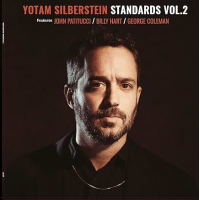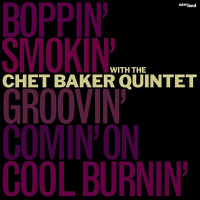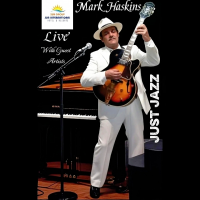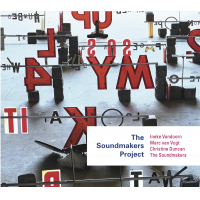Home » Jazz Musicians » George Coleman
George Coleman

No tenor saxophonist better epitomizes the robust muscularity of that heavyweight instrument of jazz expression than George Coleman. With brilliant technique and a deeply soulful tone firmly rooted in his hometown of Memphis, George has performed with many of jazz’ most legendary figures and influenced countless saxophonists during his half century in music.
Growing up in Memphis’ rich musical environment of the late ‘40s and early ‘50s, alongside such notables as Booker Little, Harold Mabern, Frank Strozier, Jamil Nasser, Hank Crawford, Phineas Newborn Jr., and blues immortal B.B. King, Coleman began to teach himself to play the alto saxophone in 1950, upon being profoundly affected by the music of Charlie Parker.
So prodigious was his talent that George was soon performing locally and in 1952, at the age of 17, was invited to tour with B.B. King after the guitarist heard him in a local club. Coleman spent three more years on the vibrant Memphis scene, expanding his musical knowledge through his associations and influences, and writing for popular artists including the Moonglows and Ray Charles.
In 1955 he rejoined B.B.’s band, but this time on tenor sax, which would become his primary horn from that point on.
In 1956 George moved to Chicago, along with Booker Little. The bustling jazz scene brought him together with local heavyweights like Gene Ammons, Johnny Griffin, John Gilmore and Ira Sullivan, and he joined Walter Perkins’ group, The MJT + 3. When Max Roach heard George with this unit in 1958, he invited him to join his own quartet featuring Kenny Dorham on trumpet.
Coleman moved to New York later that year and has made his home there ever since. Booker soon replaced Dorham in the group and George remained with Max for two years. When eminent trombonist Slide Hampton formed his octet in 1959, George and his Max Roach bandmates Little and Julian Priester formed the brass-heavy front line with Slide and Freddie Hubbard.
He remained with Hampton until 1962, touring Europe for the first time during his stay. But more importantly, he began focusing more on his own composing and arranging, laying the foundation for his own octet that would be formed in 1974 and which is still a powerful force on the scene today.
After a brief stint with organist Wild Bill Davis, a call from the incomparable Miles Davis in 1963 briefly re-united Coleman with his old Manassas High schoolmates Mabern and Strozier, who soon departed in favor of the personnel that would form one of the most influential groups in jazz history.
Read moreTags
Roy Brooks: The Free Slave
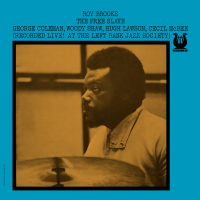
by Pierre Giroux
Roy Brooks's The Free Slave, newly reissued on Time Traveler Recordings as a 180-gram vinyl LP, stands as a passionate tribute to the drummer's remarkable artistry and his often overlooked role as one of the most rhythmic thinkers of the post-bop period. Recorded live by Muse Records on April 26, 1970, at Baltimore's renowned Left Bank Jazz Society, the session features Brooks leading a stellar quintet that includes trumpeter Woody Shaw, tenor saxophonist George Coleman, pianist Hugh Lawson, and bassist ...
Continue ReadingGeorge Coleman: With Strings
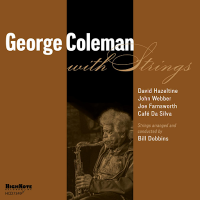
by Jack Bowers
Sooner or later (usually later), a jazz saxophonist (or other instrumentalist) will entertain a desire to leave his or her normal comfort zone and record an album with “class." In other words, cue the string section and get ready to score some ballads. Tenor virtuoso George Coleman, who likely needs no introduction to even the more casual jazz fan, is the latest to take the With Strings plunge, diving headlong into a number of sumptuous, string-laden arrangements by Bill Dobbins. ...
Continue ReadingGeorge Coleman, Anne Mette Iverson, Sylvie Courvoisier with Wadada Leo Smith, and Keith Jarrett with Gary Peacock and Paul Motian

by Hobart Taylor
Regeneration... New and old music featuring George Coleman, a newly released historic Keith Jarrett Trio recording, and astounding new music from Anne Mette Iverson as well as Sylvie Courvoisier with Wadada Leo SmithPlaylist Craig Taborn /Marcus Gilmore/Nels Cline “Queen King" from (Trio of Bloom) (Pyro clastic) 00:00 Anne Mette Iversen “TBQE (To Be Questioned Eventually)" from Marbles (Brooklyn Jazz Underground Records) 8:56 Host Speaks 15:44 Johnathan Blake “Last Breath" from My Life Matters (Blue Note) 17:18 Sylvie Courvoisier ...
Continue ReadingGeorge Coleman: George Coleman with Strings
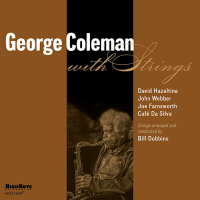
by Jack Kenny
The allure of recording with strings has captivated many jazz icons, from Stan Getz and Dizzy Gillespie to, most famously, Charlie Parker. For some, it is a pursuit of a different kind of respectability, an envying nod to the classical world. For George Coleman, a revered NEA Jazz Master, it was a chance to expand his artistry. As he explained in an interview with Rob Shepherd (2024): “I try not to be close-minded but instead try to expand my interest ...
Continue ReadingGeorge Coleman: George Coleman with Strings

by Dan McClenaghan
Tenor saxophonist George Coleman decided to leave the orbit of trumpeter Miles Davis in 1964. Or he got an elbow to the ribs and a hip check to leave the quintet, to be replaced by Wayne Shorter in the saxophone slot. Three top-notch live albums came out of the group that featured Coleman: In Europe: Live at the Antibes Jazz Festival (1964); My Funny Valentine: In Concert (1965); and “Four and More:" In Concert (1966), all on Columbia Records. Add ...
Continue ReadingDeborah Silver: Deborah Silver with the Count Basie Orchestra: Basie Rocks!

by Jack Bowers
Basie Rocks! A great idea? One best left on the cutting-room floor? Or perhaps a little of both? There are reasonable arguments to be made on all sides of the equation. On the one hand, this is the one and only Count Basie Orchestra, swinging in its own exceptional way. On the other, the orchestra has joined forces on every number with Mississippi-bred pop-rock singer Deborah Silver, the latest in a series of acclaimed guest vocalists that includes Ella Fitzgerald, ...
Continue ReadingDeborah Silver: Deborah Silver with the Count Basie Orchestra: Basie Rocks!

by Kyle Simpler
Jazz musicians frequently cover popular songs, but few do it quite like vocalist Deborah Silver. With Basie Rocks!, Silver teams up with the iconic Count Basie Orchestra for a genre-crossing collection that you truly have to hear to believe. This is a groove-charged big band album that reimagines classic rock and pop classics through the swinging lens of traditional jazz. While that premise might sound gimmicky on paper, the result is total sonic satisfaction. Produced by ...
Continue ReadingSmoke Announces Concert Line-up For April Aka Jazz Appreciation Month As The Jazz Club Kickstarts Its 25th Anniversary Festivities

Source:
AMT Public Relations
SMOKE Debuts: Nabaté Isles (Apr 3) and Walter Smith III (Apr 4-7); SMOKE’s 25th Anniversary Celebration: George Coleman and Special Guests (Apr 10-14); Ode to Joe: Celebrating the Music of Joe Henderson (Apr 17-21); Jacky Terrasson Trio (Apr 24-28) SMOKE Jazz Club is thrilled to present the first of many 25th anniversary celebrations starting with George Coleman and special guests (Apr 10-14). NEA Jazz Master George Coleman opened the doors to SMOKE in April 1999, then christened its newly renovated ...
read more
Pianist/Composer Marcus Persiani 'The Proper Time' Features George Coleman, Wayne Escoffrey And More!

Source:
Scott Thompson Public Relations
Marcus Persiani is a pianist, composer and arranger who has performed and toured with many luminary musicians throughout his career. First influenced by the sound of Debussy's melodies echoing from the piano through his home, he was drawn to jazz greats like Herbie Hancock, Ahmad Jamal, and McCoy Tyner. His journey has taken him from Chicago's vibrant musical scene to New York's artistic hub. While sharing the stage with such artists as Dizzy Gillespie, Max Roach and Tito Puente, and ...
read more
Jazz Musician of the Day: George Coleman

Source:
Michael Ricci
All About Jazz is celebrating George Coleman's birthday today!
No tenor saxophonist better epitomizes the robust muscularity of that heavyweight instrument of jazz expression than George Coleman. With brilliant technique and a deeply soulful tone firmly rooted in his hometown of Memphis, George has performed with many of jazz’ most legendary figures and influenced countless saxophonists during his half century in music. Growing up in Memphis’ rich musical environment of the late ‘40s and early ‘50s, alongside such notables as ...
read more
World-Renowned Smoke Jazz Club Celebrates Its Highly Anticipated Reopening And Expansion

Source:
AMT Public Relations
SMOKE Grand Reopening Concert Celebration George Coleman Quartet plus special guest Peter Bernstein: George Coleman (tenor saxophone), Peter Bernstein (guitar), Davis Whitfield (piano), Peter Washington (bass), and Joe Farnsworth (drums). Thu-Sun, July 21-24, 2022, sets at 7:00 p.m. + 9:00 p.m. and additional 10:30 p.m. (Fri & Sat only). Doors open at 5:00 p.m. SMOKE 2751 Broadway New York, NY 10025 212-864-6662 In-Person $40-$60. Livestream $10. Tix go on sale June 6, 2022. For more information, please ...
read more
Jazz Musician of the Day: George Coleman

Source:
Michael Ricci
All About Jazz is celebrating George Coleman's birthday today!
No tenor saxophonist better epitomizes the robust muscularity of that heavyweight instrument of jazz expression than George Coleman. With brilliant technique and a deeply soulful tone firmly rooted in his hometown of Memphis, George has performed with many of jazz’ most legendary figures and influenced countless saxophonists during his half century in music. Growing up in Memphis’ rich musical environment of the late ‘40s and early ‘50s, alongside such notables as ...
read more
Jazz Musician of the Day: George Coleman

Source:
Michael Ricci
All About Jazz is celebrating George Coleman's birthday today!
No tenor saxophonist better epitomizes the robust muscularity of that heavyweight instrument of jazz expression than George Coleman. With brilliant technique and a deeply soulful tone firmly rooted in his hometown of Memphis, George has performed with many of jazz’ most legendary figures and influenced countless saxophonists during his half century in music. Growing up in Memphis’ rich musical environment of the late ‘40s and early ‘50s, alongside such notables as ...
read more
Jazz Musician of the Day: George Coleman

Source:
Michael Ricci
All About Jazz is celebrating George Coleman's birthday today!
No tenor saxophonist better epitomizes the robust muscularity of that heavyweight instrument of jazz expression than George Coleman. With brilliant technique and a deeply soulful tone firmly rooted in his hometown of Memphis, George has performed with many of jazz’ most legendary figures and influenced countless saxophonists during his half century in music. Growing up in Memphis’ rich musical environment of the late ‘40s and early ‘50s, alongside such notables as ...
read more
Legendary Saxophonist George Coleman Coming to the Jazz Standard October 25th thru 28th, 2012.

Source:
Two for the Show Media
George Coleman would be a legendary figure in jazz for his crucial role in the Miles Davis Quintet of 1963-64, even if he'd never recorded a string of fine albums as a leader. Coleman fans have heard him most often in an acoustic setting with longtime Memphis running partner, pianist Harold Mabern. But this week at Jazz Standard, the sagacious tenor man explores his rare-groove side in the company of hard-hitting organist Mike LeDonne and fleet-fingered guitarist Russell Malone. “The ...
read more
George Coleman Quintet @ The Jazz Standard in NYC - February 3 - 6, 2011

Source:
Two for the Show Media
Thursday—Sunday February 3, 2011 GEORGE COLEMAN QUINTET at The Jazz Standard—NYC
George Coleman—tenor saxophone Larry Goldings—Hammond B-3 organ Peter Bernstein—guitar George Coleman Jr.—drums Daniel Sadownick—percussion
“George Coleman is a marvel," wrote The New Yorker. “There isn't a saxophonist who knows his instrument better, or one who imparts so much knowledge in every marathon solo." Born in 1935 in Memphis, TN, George worked with Max Roach and Slide Hampton ...
read more




